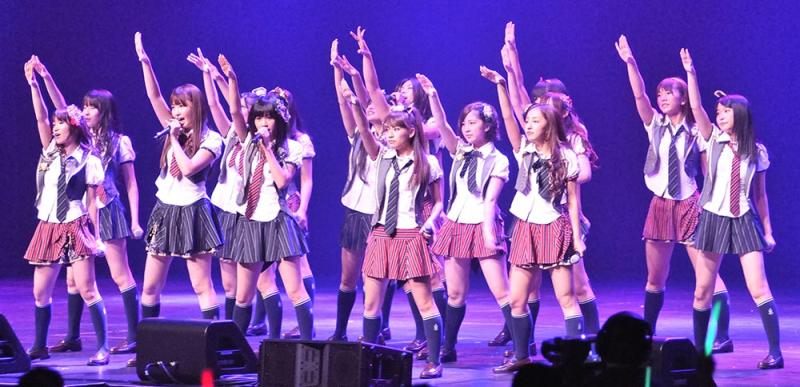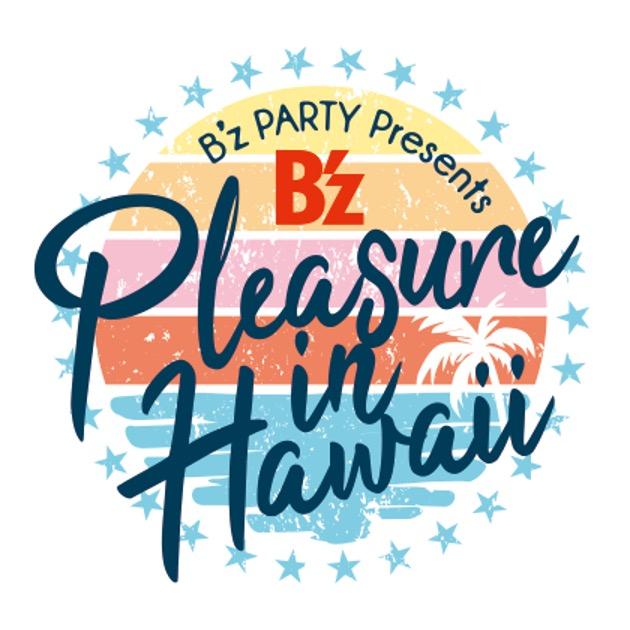In the summer of 2015, I went to see Gesu no Kiwami Otome, a band whom I still listen to frequently. We were in Chiba’s Makuhari Messe - a massive convention center outside of Tokyo with multiple stages and meeting halls. I did not know that in the venue next door were three teen girls dressed in black vests and red chiffon skirts and singing about chocolate in front of a heavy metal backing band. On the way out, I noticed them, though - the Baby Metal fans. Several family groups with daughters dressed up in the same red and black costumes with chiffon skirts that I learned were the hallmarks of the Baby Metal vocalists.
So the next day, I started listening to Su Metal, Moa Metal, and Yui Metal. These three girls were in their early teens when they first appeared onstage to combine idol pop and heavy metal sensibilities. They went on to convert the world. They headlined major European and U.S. rock festivals, and became friends with famous metal musicians. I learned by experience that day that not all Japanese are AKB48 fans.
I learned later that most are also not Baby Metal fans. There is a persistent myth that Japan is a place were metal music thrives. This is just not the case. Metal is no more popular in Japan than it is anywhere else in the world. But Japan does have something that can amplify nearly any trend that begins there. That thing is Tokyo, the largest city on earth. The greater Tokyo area has a population of more than 36 million people. As metro areas go, the next largest is Jakarta, at just over 33 million. New York, the only U.S. city on the top twenty list, is number 11.

CC-BY-NC 2004. Patrick M. Patterson
Tokyo looking West from Sky Tree.
Population is not the only thing Tokyo has. According to the Tokyo Metropolitan Industrial Location Support Center, there are 633,819 businesses in Tokyo. 2964 of those businesses are capitalized at more than 1 billion yen (that’s right around 50% of the total number of Japanese businesses of that size). The overall sales of these Tokyo businesses in 2020 was 394.7817 trillion yen. This makes Tokyo a massive market for nearly anything, and music is no exception.
For these reasons, Tokyo, and by extension Japan, is among the most diverse music markets in the world. But outside of Japan, we rarely have a chance to witness the density and diversity of Japan’s music scene. It is, after all, the world’s second-largest music market. Add streaming, digital music downloads, and the effects of CD rentals, and the market may be bigger than it appears in official statistics. Today, most people who do not live in Japan begin listening to Japanese pop music through anime. Anime songs (anisong) artists are often global celebrities, and draw large crowds at anime conventions. This leads music fans from outside of Japan to a kind of content myopia. Familiar with anisongs, they assume that the entire market consists of that. This assumption is not accurate.
Songs for anime make up only 7.7% of total music sales in Japan. Thus what passes outside of Japan for “Japanese popular music” has a tiny market share. The largest category is “pop/kayokyoku.” This is a broad category, and plenty of musicians who also do music for anime are included within this for their songs that are not featured as theme songs. This is what we would call the mainstream, and it encompasses music from rock to pop to older style kayokyoku pop songs, though not enka. By a large margin, the songs and artists that are in this category do not appear often in non-Japanese markets. Japan's music market and fan preferences are diverse. The mainstream includes songs by Kuwata Keisuke and his band Southern All Stars. It includes music by B’z, a rock group that has higher historical record sales than Prince or Journey. If you haven’t heard of them, it is probably only because you don’t buy music in Japan, even though you may buy music from Japan. To understand these best-selling categories it is necessary to get back to the basics of Japan’s music market.
First, 65% of all music sales in Japan in 2022 came from physical sales: CDs, records, DVDs. Just over 33% came from digital sales (downloading) or streaming. More than any other music consumers in the world, Japanese consumers prefer to buy their music in physical form. The fastest-growing market is streaming, while downloading digital music is in decline.
There are several reasons for this physical music preference in Japan. First, much of Japan’s favorite music is not available for downloading. Many record companies and management companies avoid publishing new music digitally because they don’t want to cut into the more profitable physical sales market. Second Japanese fans tend to be very loyal and expect fan service from their favorite artists. CDs allow record companies to provide photos, song lyrics, liner notes, and even customized artist messages to fans. CDs thus seem worthwhile. They also function as keepsakes that deepen the fan experience.
Some production companies have taken this so far that they have convinced fans to buy multiple copies of the same CD as an expression of their love for the artist. This is the case, for example, with AKB48. The group's business strategy encourages many CD purchases by each fan. To do this the group creates CDs that include several extras within the case. While the musical contents of each CD is the same, the contents of each case differ. AKB sells five different CD editions, each with a picture of a different one of the top five girls on its cover, for example. The idea here is that fans will buy the CD that features the photo of the girl they like the most, or try to collect all five versions. The liner notes and song words and other photographs inside the CD are also keepsakes. This business strategy has been very successful. More votes were cast in the last AKB ranking election in June 2018 than were cast nationwide for national governmental elections that year. In other words the business strategy works.
The popular boy band Arashi, which was managed by Johnny and Associates (soon to be renamed Smile Up!) had similar success, though with a less explicit marketing strategy. Their popularity and the success of the management agency in getting them on TV frequently have made them legends. Fans worship the ground that they have walked on and will buy multiple CDs to support the band. While Arashi ended their group performances at the end of 2019, They remain as popular as ever.
Understandably, such groups with such vocal and adoring fan bases gain attention outside of Japan. Beyond anisongs, idol groups tend to be perceived as a large part of Japanese popular music. The wild costumes and colors, the fan-oriented marketing and styles - these also grab attention, and cause many people outside Japan to identify Japanese popular music as idol music. But this is, again, not the mainstream. Although AKB48 and Arashi both regularly topped music charts, idol groups have never been able to lay claim to the largest volume of music sales in Japan.
That claim goes to the musical mainstream - a hidden mainstream. Nearly 73% of Japan’s popular music is almost unknown outside of Japan. This is a function of the preference for physical CDs, the size of the Japanese music market, both of which I discussed above, and at least one other key element: the demand of fans for loyalty, and the business risk involved in defying those fan expectations by sending a band overseas when they are already profitable at home. Production companies, which are businesses, are looking for profit, and have found a formula that is successful in Japan (although the market is changing rapidly). The fact that mainstream music acts are extremely popular in Japan’s domestic market does not make them obvious choices for export.
Most mainstream music acts are not tied to anime, which is already immensely popular around the world. So they cannot “piggyback” on the release of a new anime movie or series to introduce their music to fans, as, for example, the band Radwimps did with several songs on the soundtrack for the global anime hit Your Name. Neither can they claim the kind of notoriety that goes with an idol group like AKB48. To find a niche in the U.S. market, for example, a mainstream band will have to make some sacrifices. They’ll have to spend money on marketing, travel, touring, and distribution. Then, they will have to say goodbye to their loyal Japanese fans often, and perhaps for extended periods, to make themselves available for concerts and media appearances in the U.S. All of this, of course, without a guarantee of success in the world’s biggest music market where there is lots of competition. Add to that the fact that the U.S. market has never been particularly friendly to musicians who do not use English. The investment is huge, and there is no guarantee of any return. The risk is just too high - particularly if the band is already a success in Japan. This explains why Japanese music is not more common in the United States.
Singer–songwriter Matsutoya Yumi is one very good example. Matsutoya's music is both skillfully crafted and comes from her as a songwriter. Her delivery is excellent, and she is familiar with the songs and a skillful musician. Her performances are not the crowd-wowing performances of one of the Idol groups. Still, her songs have been consistently popular for a very long time. Since 1973 fans have continued to buy her music and attend her concerts. Yumin, as she is popularly known, has never had to go overseas to make money. Her popularity is great Enough in Japan that she can make a solid profit without having to leave the shores of her home country.
Other examples of this mainstream include Southern All Stars, Dreams Come True, B’z, Gesu no Kiwami Otome, Sekai no Owari, MISIA, and many others, most of whom are not well known, or not known at all outside of Japan. They have no reason to be. They focus on their own domestic market and make good money doing so. B’z, for example, did a rare concert outside of Japan in 2018. They visited Hawaii. But concert tickets were not sold in Hawaii. In fact, they were not sold anywhere outside of Japan. The B’z Pleasure in Hawaii concert was for B’z fans from Japan. To go to the concert, a fan had to buy tickets through the B’z Fan Club, which included a round-trip air ticket to Hawaii, hotel booking, and transportation to and from the concert venue. Without a fan club membership and a way to purchase your ticket in Japan, you were out of luck.
The B’z “Pleasure in Hawaii” concert was not at all about making a name or a market in the United States. It was completely about attention to Japanese fans, who have made B’z one of the best-selling bands in the world. With that kind of fan base, popularity in the rest of the world just doesn’t matter, except that to try for popularity in the rest of the world would be foolish. To give up that kind of status and profit just to take a risk in the international marketplace makes no business, or in this case musical sense. In a nutshell, this is why most people who live outside of Japan have never heard of most of the mainstream of Japanese popular music.




Add new comment